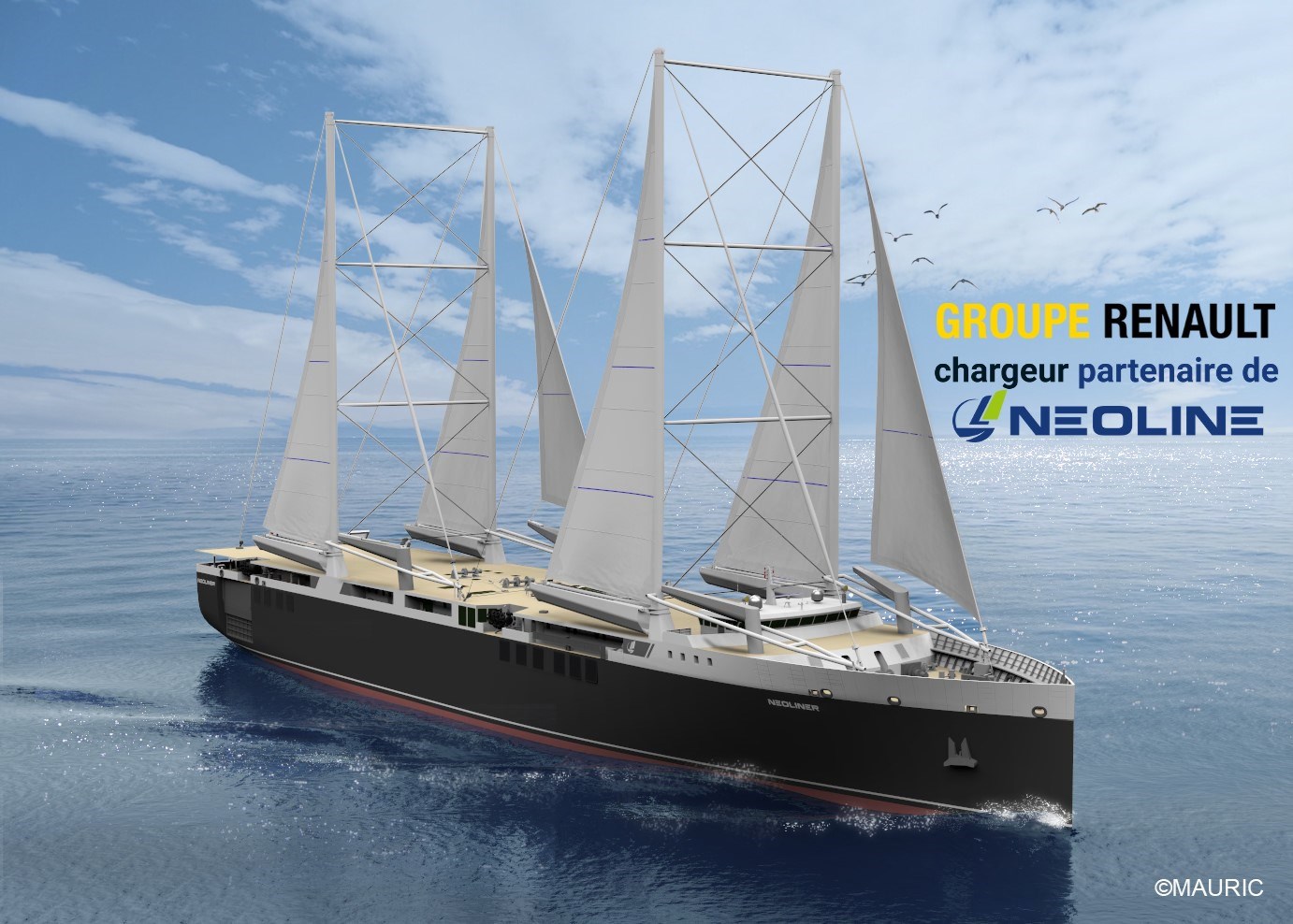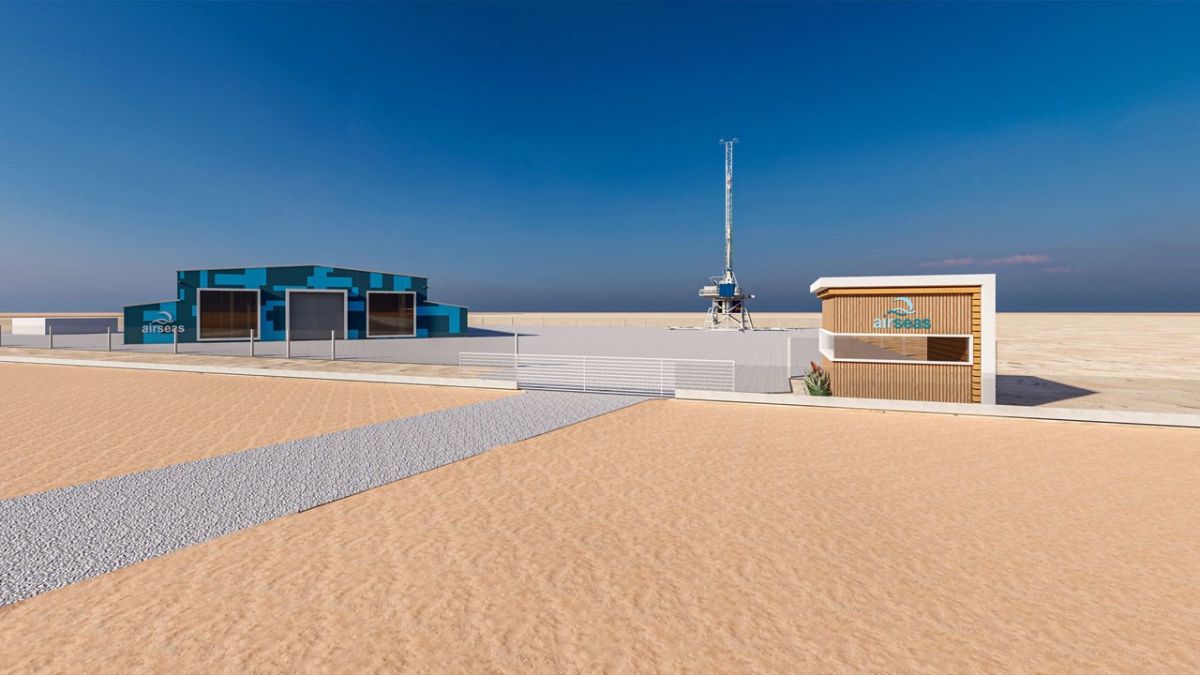The coming two years could become the key period when wind assist technologies come of age, again. As climate scientists and political minds continue their chess game around the UNFCCC meetings, technology firms that seek to fuel shipping by another means than from fossilised hydrocarbons are finding they have an societal ear into which they can shout. And in shipping, that corner of society ignored by the Paris Agreement, and now facing the prospect of an IMO devised regulatory roadmap, there are some technological ideas that are getting onboard ships and which environmental groups and the technology firms alike, hope will open a new age for shipping.
It’s hard not to use cliched metaphors when writing about wind-assist technologies in shipping; the wind is in their sails and it will be smooth sailing form here, but there have been a few announcements in recent weeks relating to technologies and systems, or plans for new ships, that give a hint of the future to come.
As people working in the shipping industry assess their future investments, and which direction the industry will take, it does so knowing that there is now a commitment by the IMO to put flesh on a regulatory road map that will push the industry as a whole cut its emissions to 50% of what they were in 2008 by 2050. This comes regardless of any growth in the industry given how shipping is directly linked to global trade (the better the economy the likelihood the need for more ships). New technologies, but also old technologies rethought, are going to be part of the answer, and utilising windpower as a renewable energy source is clearly in this mix.
The wind assist technologies have certainly matured in recent years, and the formation of the International Windship Association was a step in the right direction after a few years of technology start-ups spending far too much energy bickering with each other about which technology works and which does not, rather than pushing a message to the shipowning community that they had solutions that could be a key part of the future industry landscape.
So here’s some recent announcements that show that wind assist is part of the future. And one should note, not only the technology companies that are developing the cleantech solutions for shipping (And who are fighting to get the backing to make viable solutions to help meet shipowners’ soon to be regulated targets), but those forward thinking shipowners that are already allowing these systems to be trialled and used on their ships to enable vital real-world experience.
It is shipping companies such as these that need to be recognised for offering a platform: Viking Line (Norsepower flettner), Bore – A Spliettof Group Company (Norsepower flettner), Maersk Tankers (Norsepower Flettner) Ultrabulk (Smart Shipping Alliance Smart Rig) Airbus (Air Sea Kite) Blue Planet Shipping (Anemoi flettner). China Merchant Energy (Dalian Shipbuilding rigid sail) Renault Group (Neoline sail) and likely some more that will be added here
Recent developments to 2019
Anemoi
The Anemoi system is a flettner rotor system, similar to that of Norsepower, however in the company’s recently published videos one can see that a key part of this technolgy is the sliding platforms that move the flettners up and down the side of the deck as needed (i.e. to give shore and shipboard cranes access). The trial installation is on MV Afros, operated by Blue Planet Shipping in Greece. If you are wondering about the company name, Anemoi is the Greek god of the winds.
Norsepower
Finnish cleantech firm Norsepower has become something of a posterboy for the nascent wind assist industry through some well aimed PR work. The company has so far managed to get its systems retrofitted onto three vessels, the third one being a Maersk tanker this summer, and has an order for a pair of flettners to go not a cruise ferry newbuilding. Being a European company it has been successful due in part to its ability to tap into the European drive for clean transport solutions by securing EU grant money
Eco-Flettner Project
This EU funded project led to a large flettner rotor being installed on Fehn Pollux, a coastal vessel operated by Leer-based Fehn Ship Management. The flettner, fastened on the vessel’s forward part has performed well accroding to project scientist Professor Michael Vahs, who has been researching wind propulsion for seagoing vessels at Emden / Leer University for more than 15 years. “In optimal conditions, this prototype will deliver more thrust than the main engine,” he has been quoted as saying. The flettner was retrofitted onto Fehn Pollux this year.
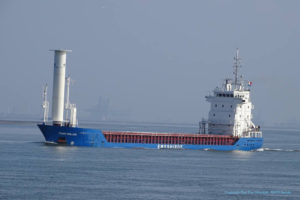
Econowind
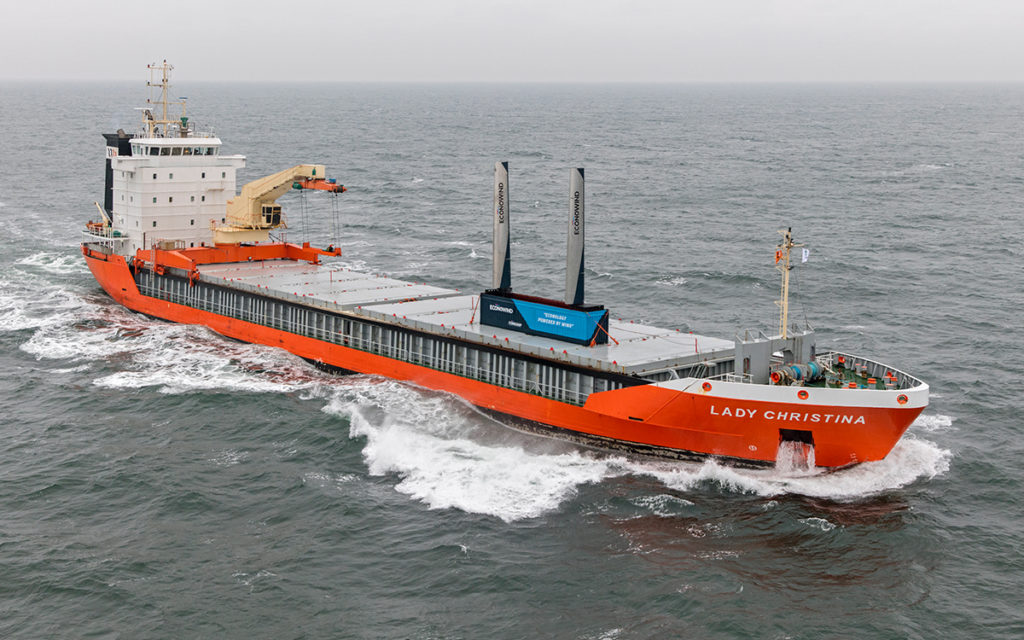
Dalian Shipbuilding
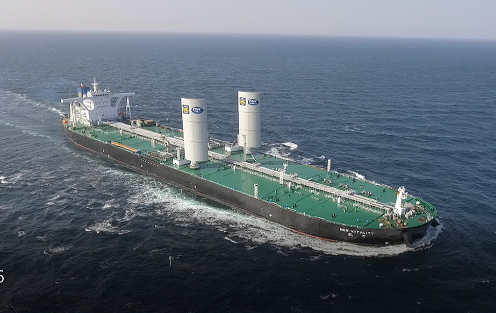
The full list of ships with systems installed (as far as we know)
| Ship | Shipowner | Technology | Technology firm | Installation or stage |
| E-Ship 1 | Enercon | 4x fletner rotors | Own | Installed 2010 |
| Estraden | Bore ( A SPlietoff Group) | 2 x flettner rotors | Norsepower | Installed Nov 2014 & Nov 2015 |
| Viking Grace | Viking Line | 1x flettner Rotors | Norsepower | April 2018 |
| Maersk Pelican | Maersk Tankers | 2 x flettner rotors | Norsepower | August 2018 |
| MV Afros | Bue Planet Shipping | 4 x Flettner rotors | Anemoi | Nov 2017 |
| MV Fehn Pollux | Fehn | 1 x rotor | Ecoflettner | May 2018 |
| Lady Christina | Wijnne Barends | Ventfoil | Econowind | October 2018 |
| New Vitality | China Merchant Energy Shipping | Rigid Sail | Dalian Shipbuilding | October 20-24 2018 |
Coming soon: Recent project announcements that may result in more real-life examples
Smart Green Shipping Alliance
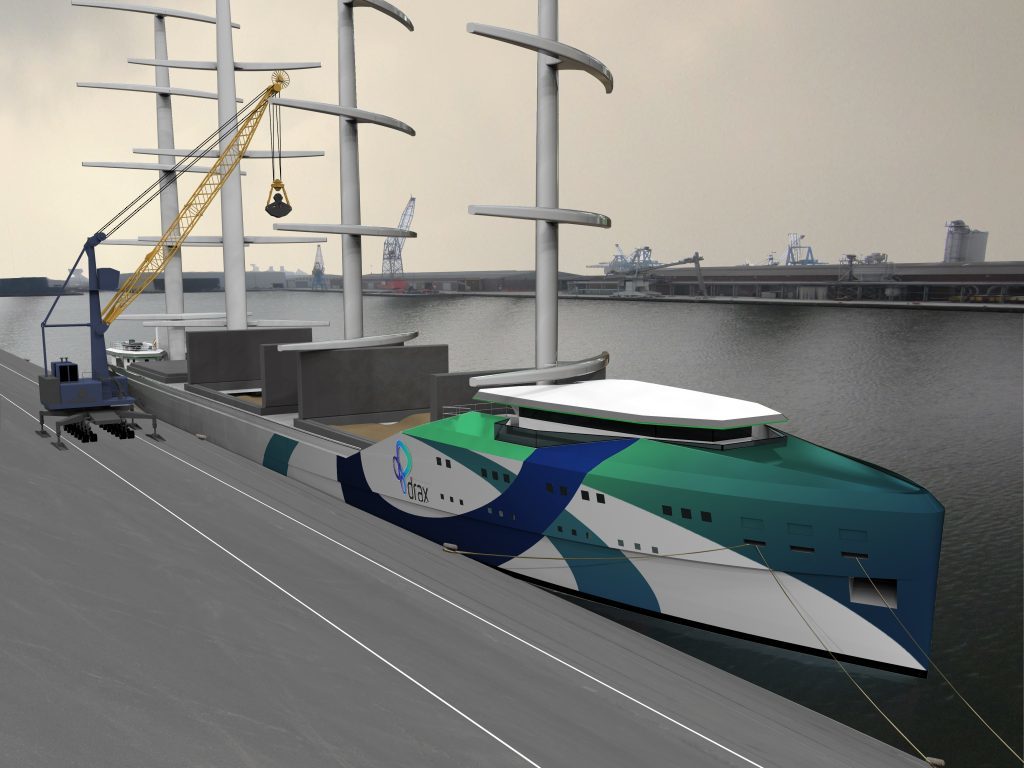
AirSeas
Neoline
There are other projects that have seen developments in plans for feasibility studies or small sale trials (not on commercial tonnage. These include Bound4Blue, which could have a system installed in 2019, Wind+Wing, Windship Technology, Blue Technology, Ponant, Ecomarine and UT Wind Challenger (MOL).
Standing still (hitting the doldrums)
There are other technology companies in this market. Companies like Magnuss, Oceanfoil, Propelwind, Skysails, Ecoliner and even the Ecoship Peaceboat (Peaceboat announed it has placed an order with the Helsinki Shipyard Arctech over a year ago, but has yet to formally announce when building will start as it seeks to finalise its funding position).
These companies are likely in need of more financial support, and of course shipping companies with which to build feasibility studies and test programmes.
They all claim to have done their homework, saying their ideas or systems work. In the case of Skysails, the company has already been commercially selling systems before tougher market conditions hit.
There are reports of other projects at the moment, but they remain under embargo.
The International Wind Ship Association
ISWA was formed by the industry, with membership including the companies developing the solutions as well as those helping get the systems on board test vessels to help prove viability.
The association has now grown to a point where it is developing plans for regional hubs to assist what it sees as the growing market interest in wind assist technology.
And to end the cliche’s here’s the last verse of that Bob Dylan song:
Yes, ‘n’ how many times must a man look up
Before he can see the sky?
Yes, ‘n’ how many ears must one man have
Before he can hear people cry?
Yes, ‘n’ how many deaths will it take till he knows
That too many people have died?
The answer, my friend, is blowin’ in the wind
The answer is blowin’ in the wind























